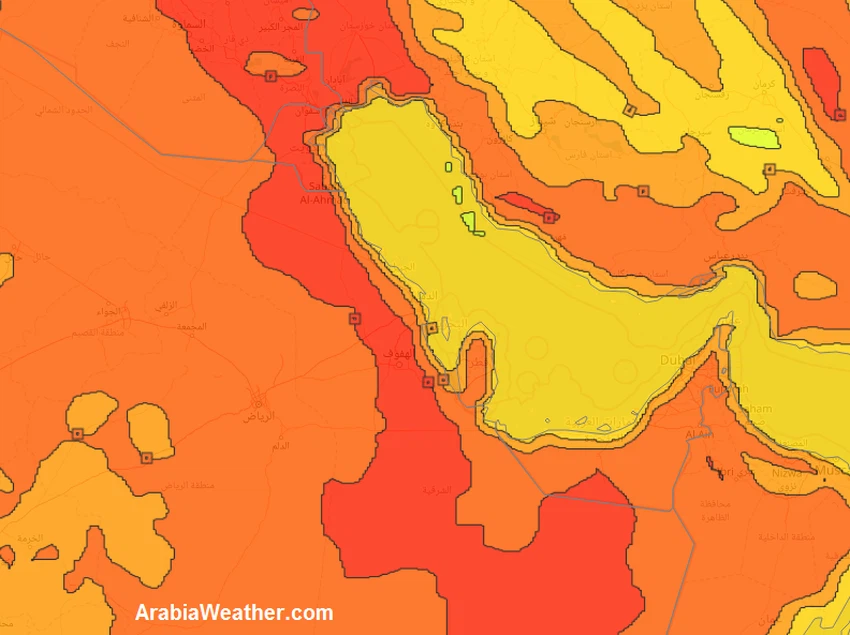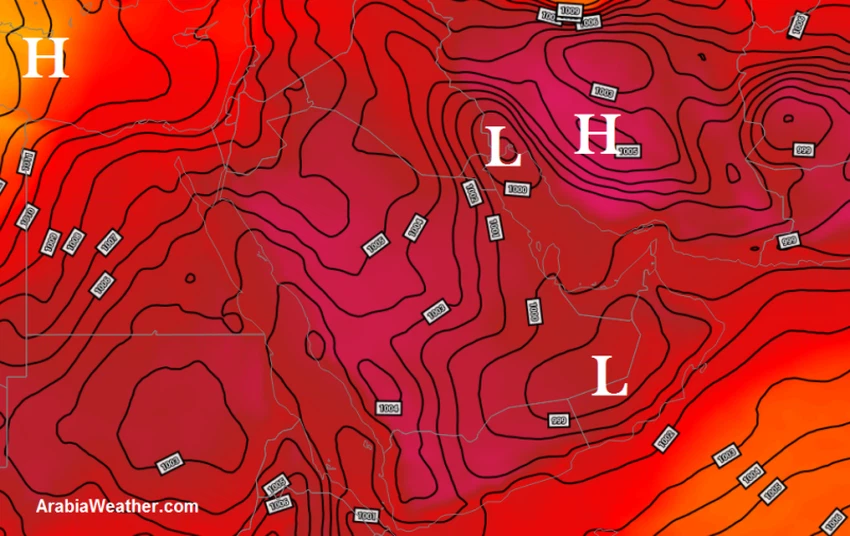الشرقية والخليج العربي على موعد مع كتلة هوائية حارة ومرهقة
موقع طقس العرب – م. ناصر حداد – يتوقع أن ترتفع درجات الحرارة بشكل تدريجي خلال الأيام القادمة، وتشتد وطأة الأجواء الحارة مع نهاية الأسبوع الحالي، على مناطق واسعة من الشرقية في السعودية ودول الخليج العربي تشمل الكويت وجنوب العراق وبشكل أقل قطر والبحرين وسواحل الدمام والجبيل.
ويتوقع أن تصل درجات الحرارة أثناء النهار الى منتصف الأربعينات مئوية في مختلف المناطق، فيما تبلغ أواخر الاربعينات مئوية في شمال الكويت وأقصى جنوب شرق العراق مثل البصرة والعبدلي ومطربة.
والخريطة التالية توضح شدة تأثير الطقس الحار خلال الأيام القادمة

وفي التفاصيل، تشير الخرائط الجوية الى تعمق منخفض الهند الموسمي بقيم ضغط جوي سطحي دون 1000 مليبار نحو شمال الخليج العربية والكويت خاصة نهاية الأسبوع، يترافق مع سيطرة كتلة هوائية حارة وجافة على أجواء الجزيرة العربية، ويتوقع أن يستمر تأثيرها خلال الأسبوع القادم.

ويجب الانتباه من الوقوف المباشر تحت أشعة الشمس والإكثار من شرب السوائل وكذلك تناول الفواكه والخضروات خلال فترة الإفطار.
Arabia Weather App
Download the app to receive weather notifications and more..



